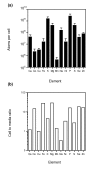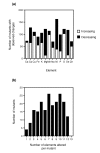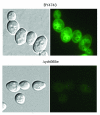Characterization of the yeast ionome: a genome-wide analysis of nutrient mineral and trace element homeostasis in Saccharomyces cerevisiae
- PMID: 16168084
- PMCID: PMC1242212
- DOI: 10.1186/gb-2005-6-9-r77
Characterization of the yeast ionome: a genome-wide analysis of nutrient mineral and trace element homeostasis in Saccharomyces cerevisiae
Abstract
Background: Nutrient minerals are essential yet potentially toxic, and homeostatic mechanisms are required to regulate their intracellular levels. We describe here a genome-wide screen for genes involved in the homeostasis of minerals in Saccharomyces cerevisiae. Using inductively coupled plasma-atomic emission spectroscopy (ICP-AES), we assayed 4,385 mutant strains for the accumulation of 13 elements (calcium, cobalt, copper, iron, potassium, magnesium, manganese, nickel, phosphorus, selenium, sodium, sulfur, and zinc). We refer to the resulting accumulation profile as the yeast 'ionome'.
Results: We identified 212 strains that showed altered ionome profiles when grown on a rich growth medium. Surprisingly few of these mutants (four strains) were affected for only one element. Rather, levels of multiple elements were altered in most mutants. It was also remarkable that only six genes previously shown to be involved in the uptake and utilization of minerals were identified here, indicating that homeostasis is robust under these replete conditions. Many mutants identified affected either mitochondrial or vacuolar function and these groups showed similar effects on the accumulation of many different elements. In addition, intriguing positive and negative correlations among different elements were observed. Finally, ionome profile data allowed us to correctly predict a function for a previously uncharacterized gene, YDR065W. We show that this gene is required for vacuolar acidification.
Conclusion: Our results indicate the power of ionomics to identify new aspects of mineral homeostasis and how these data can be used to develop hypotheses regarding the functions of previously uncharacterized genes.
Figures






References
-
- Culotta VC. Manganese transport in microorganisms. Met Ions Biol Syst. 2000;37:35–56. - PubMed
Publication types
MeSH terms
Substances
LinkOut - more resources
Full Text Sources
Other Literature Sources
Medical
Molecular Biology Databases

